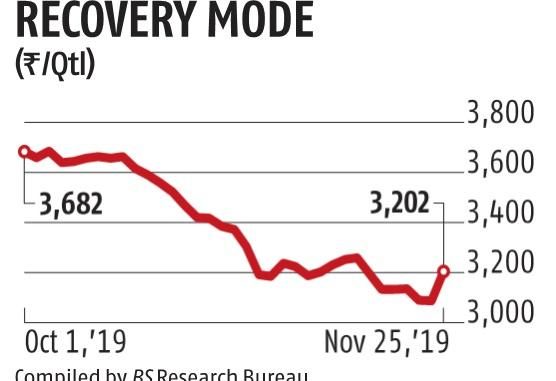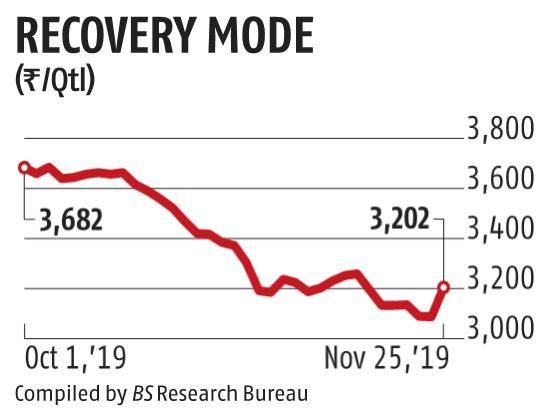
Exporters hopeful of Iran market improving next year
The domestic paddy prices are staging a modest recovery in the current procurement season after hitting rock bottom levels not long ago coupled with a rugged export market scenario.
A combination of factors have been suggested for the slow yet firm recovery in the paddy prices in the coming weeks, including significant crop loss due to flood induced inundation apart from the recent cyclone in some of the key paddy growing areas.
Besides, the paddy prices are gaining traction owing to the higher minimum support price (MSP) announced by the Centre for the current season 2019-20.
“The paddy price situation is slowly getting better after witnessing the drastic downfall. This the perfect time for the stockists and rice mills to stock for the entire coming year, which is fuelling robust procurement and buying by the market players,” Mumbai based rice exporter Devendra Vora told Business Standard.
He claimed the popular view among the traders is that the domestic rice market would not slip again at least in this season, which is why the domestic stockists and millers were acting bullish.
“At the same time, the exporters are optimistic that the Iran market would be back on track again in the next 2-4 months, which has further improved the price sentiments,” Vora added. Iran accounts for more than one million tonnes of basmati exports annually, however, the US-Iran tensions had imparted uncertainty for the mutual barter trade between India and Iran.

At the Indian Commodity Exchange (ICEX), the paddy (1121 variety) prices were trading at Rs 3,260 per quintal (100 kg), up by 3.55 per cent, as the purchase was halted at the Asia’s biggest grain market in Khanna (Punjab) following a spell of rain that lashed the area recently. Paddy 1121 price a onth ago was around Rs.3700 which fell to Rs.3088 last weekend.
Ajay Kedia, commodity analyst, said cyclone had caused extensive damage to the rabi crops, including paddy in West Bengal and Odisha belts, while there had been shortfall in paddy arrival in some Southern India markets, including Telangana.
“The extent of the damage to paddy due to flooding in the key Northern states and the recent cyclone in the South-Eastern states has yet not been estimated, but they are significant. The expected short supply in the current season is also pushing up the paddy prices,” he claimed.
He maintained while the prices have gained, there is expectation of further improvement in the coming months, owing to the spurt in demand around the New Year and the perceptible improvement in the US-Iran relations, which holds promise for the reopening of the lucrative Iran market for Indian rice exporters.
Besides, unseasonal rains in Maharashtra are expected to have damaged crops on 7 million hectares of land, he added.
Indian exporters rue the lack of long term rice export policy coupled with successive increase in procurement costs under the MSP mechanism, which they claim have made Indian rice exports, especially non-basmati, noncompetitive in the global arena.
As such, over the past few years, Pakistan, Thailand and Vietnam have emerged as strong players in the Asian and African regions, thus hampering the prospects of Indian rice exports.
First Published: Mon, November 25 2019. 18:22 IST
read the full story about Paddy prices staging modest recovery after hitting rock bottom
#theheadlines #breakingnews #headlinenews #newstoday #latestnews #aajtak #ndtv #timesofindia #indiannews
